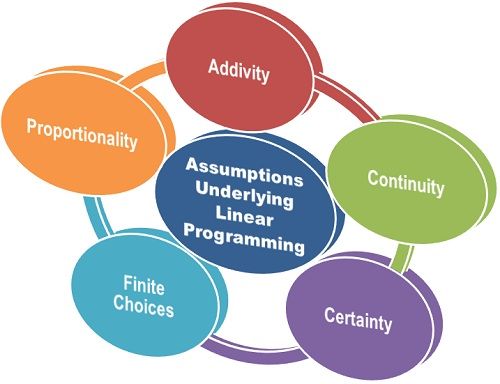The Assumptions and Limitations of Linear Programming Models

Linear programming (LP) models are powerful tools for optimization, but they come with certain assumptions and limitations. Understanding these assumptions and limitations is crucial for effectively applying LP in practical decision-making contexts. Here are some of the key assumptions and limitations of LP models:
Linearity: LP assumes that the relationships between decision variables and constraints are linear. Non-linear relationships may require more complex modeling techniques.
Certainty: LP assumes that all parameters, such as coefficients in the objective function and constraint equations, are known with certainty and do not vary over time or under different scenarios.
Additivity: LP assumes that the contribution of each decision variable to the objective function and constraints is additive. Interactions or synergies between variables may not be fully captured.
Divisibility: LP assumes that decision variables can take any continuous value within a feasible range. This assumption may not hold in situations where decision variables must be integer or binary.
Non-negativity: LP assumes that decision variables cannot take negative values. This constraint may not be realistic in all contexts, such as financial portfolios where short-selling is allowed.
Complexity: LP may not be suitable for solving highly complex problems with a large number of decision variables, constraints, or non-linear relationships. Solving large-scale LP problems may require significant computational resources and time.
Assumption of Rationality: LP assumes that decision-makers are rational and have perfect information. In reality, decision-makers may have bounded rationality and face uncertainty, risk, and cognitive limitations.
Validity of Model Assumptions: LP solutions are only as good as the underlying model assumptions. If these assumptions do not accurately reflect the real-world problem, the LP solution may be misleading or suboptimal.
Sensitivity to Input Parameters: LP solutions may be sensitive to changes in input parameters, such as coefficients in the objective function or constraint equations. Small changes in these parameters can lead to significant changes in the optimal solution.
Risk and Uncertainty: LP does not explicitly account for risk and uncertainty in decision-making. Stochastic programming and other techniques are needed to address uncertainty and risk in optimization problems.
Integer and Binary Variables: LP cannot handle problems with integer or binary decision variables directly. Integer programming (IP) or mixed-integer programming (MIP) extensions are required for such problems.
Despite these assumptions and limitations, linear programming remains a valuable tool for optimizing resource allocation, decision-making, and planning in various fields. It provides a structured framework for addressing complex optimization problems and generating actionable insights. However, it's essential to carefully consider the appropriateness of LP models and their limitations in real-world applications.
Thank you,
